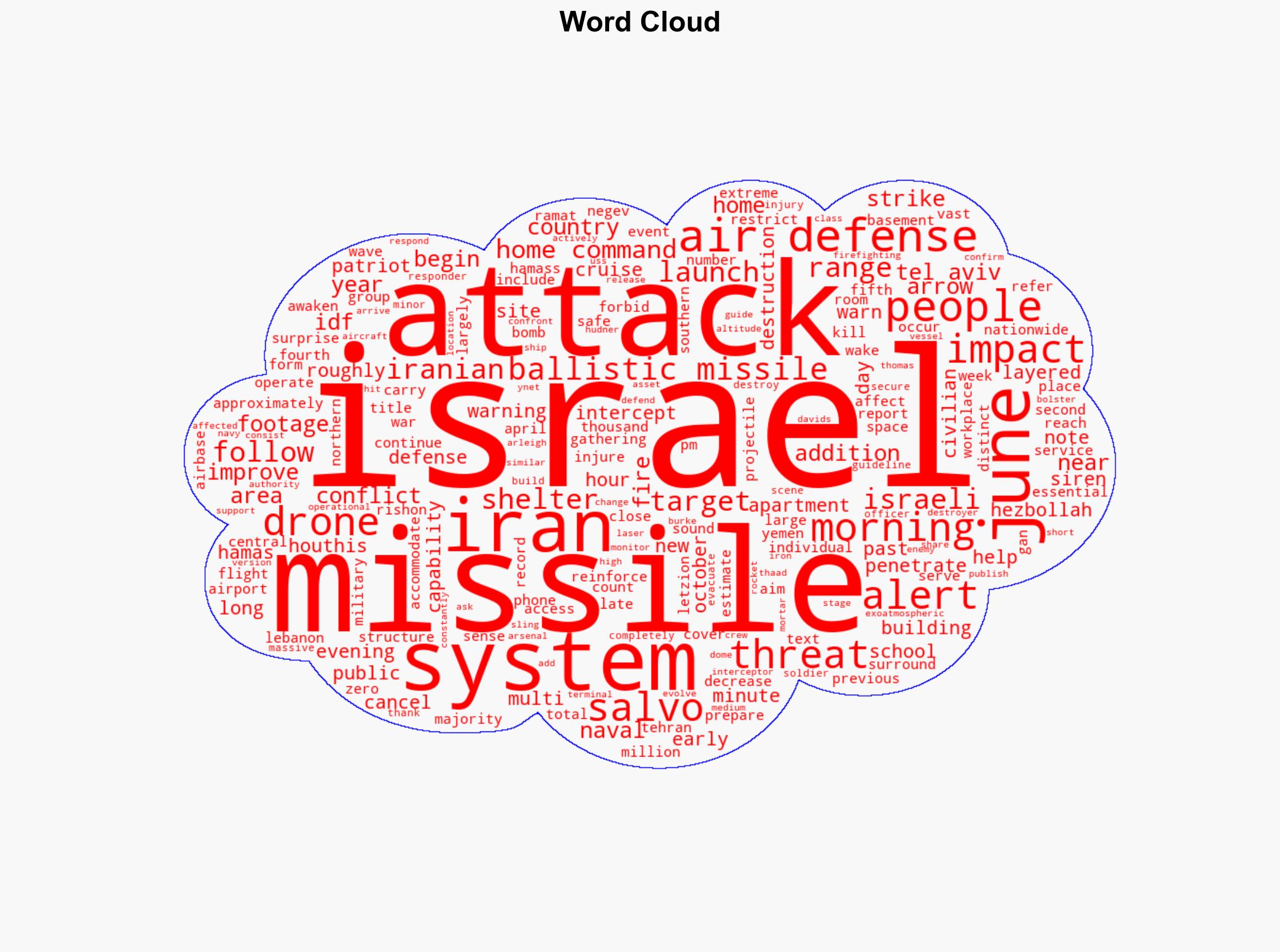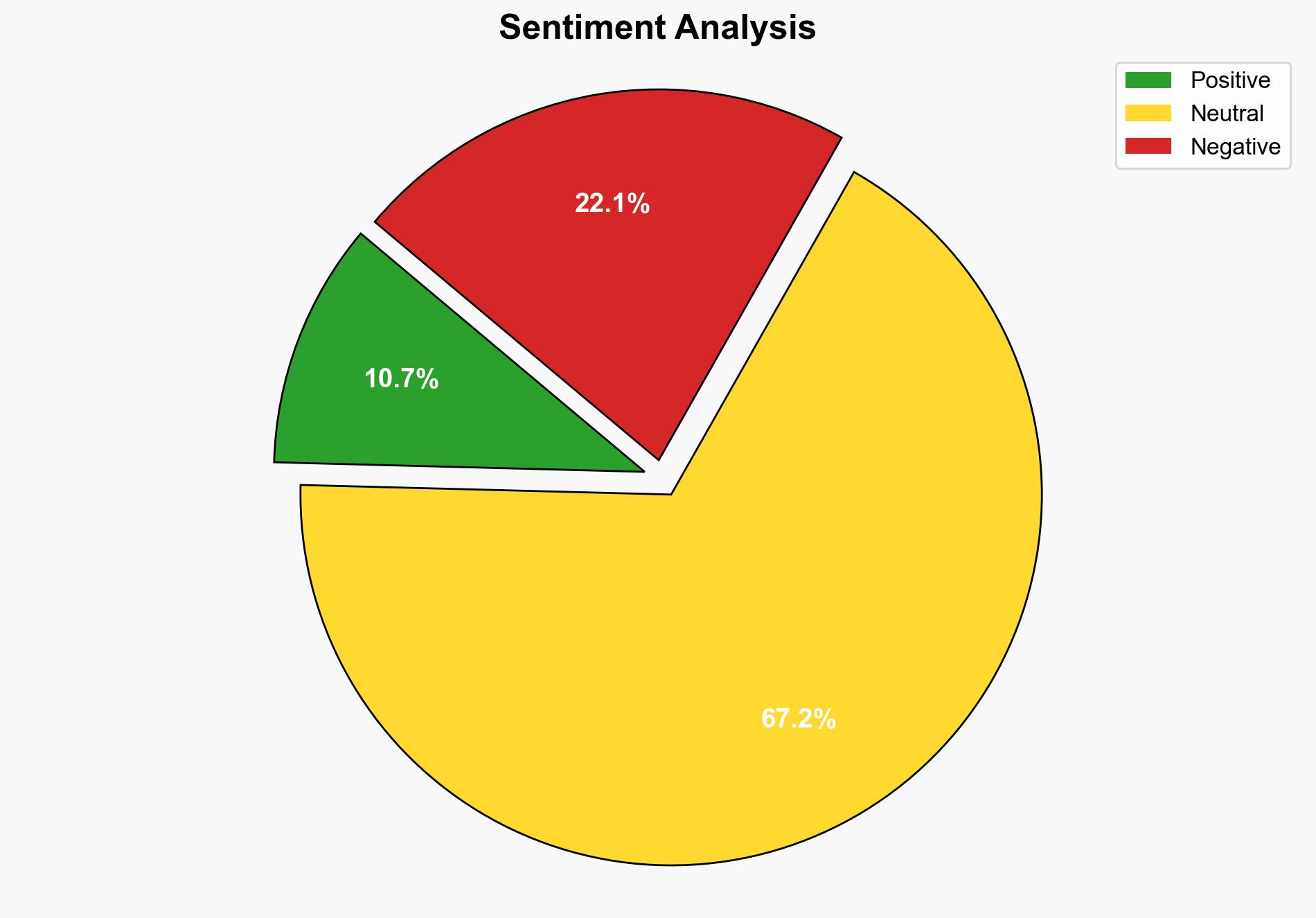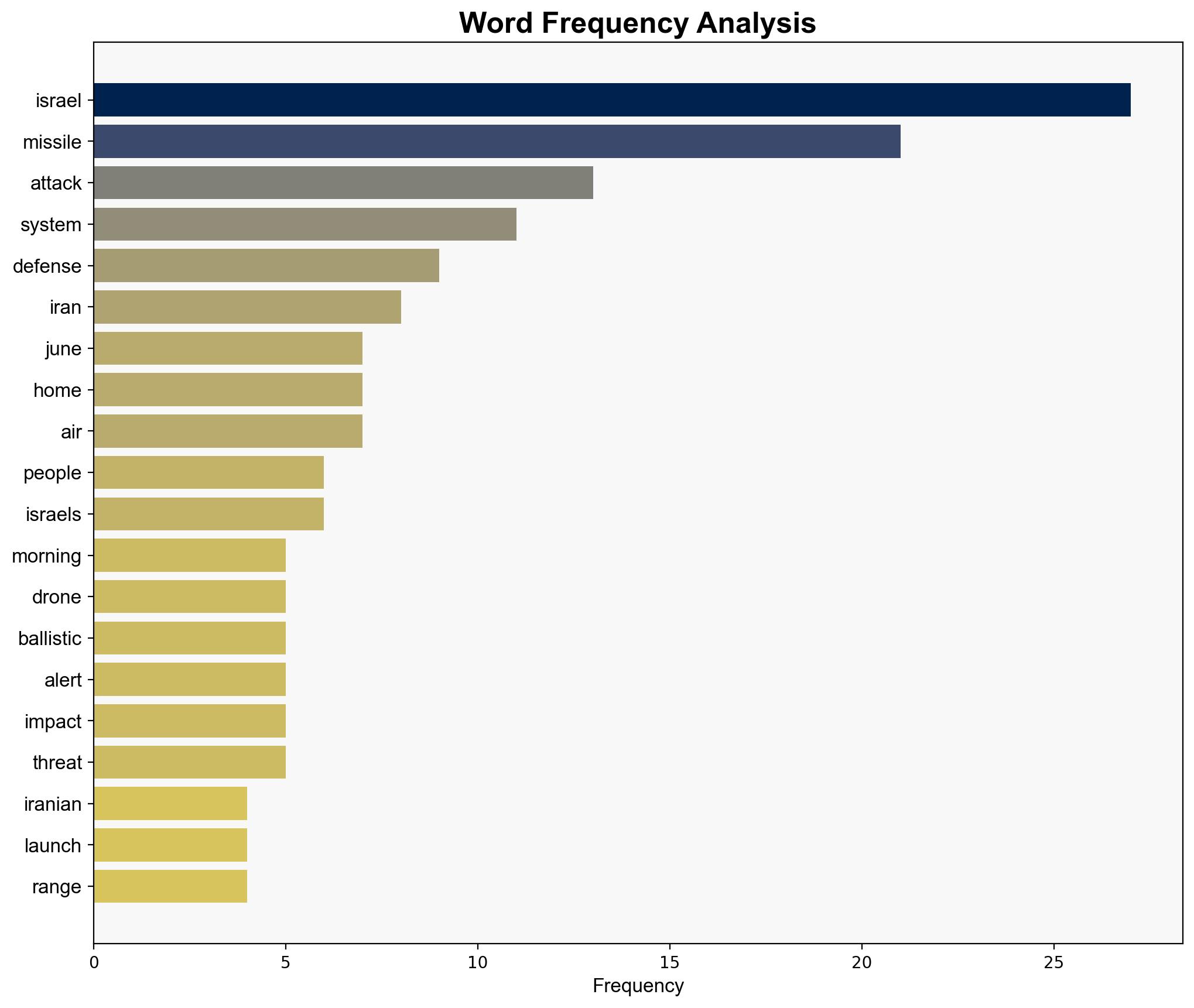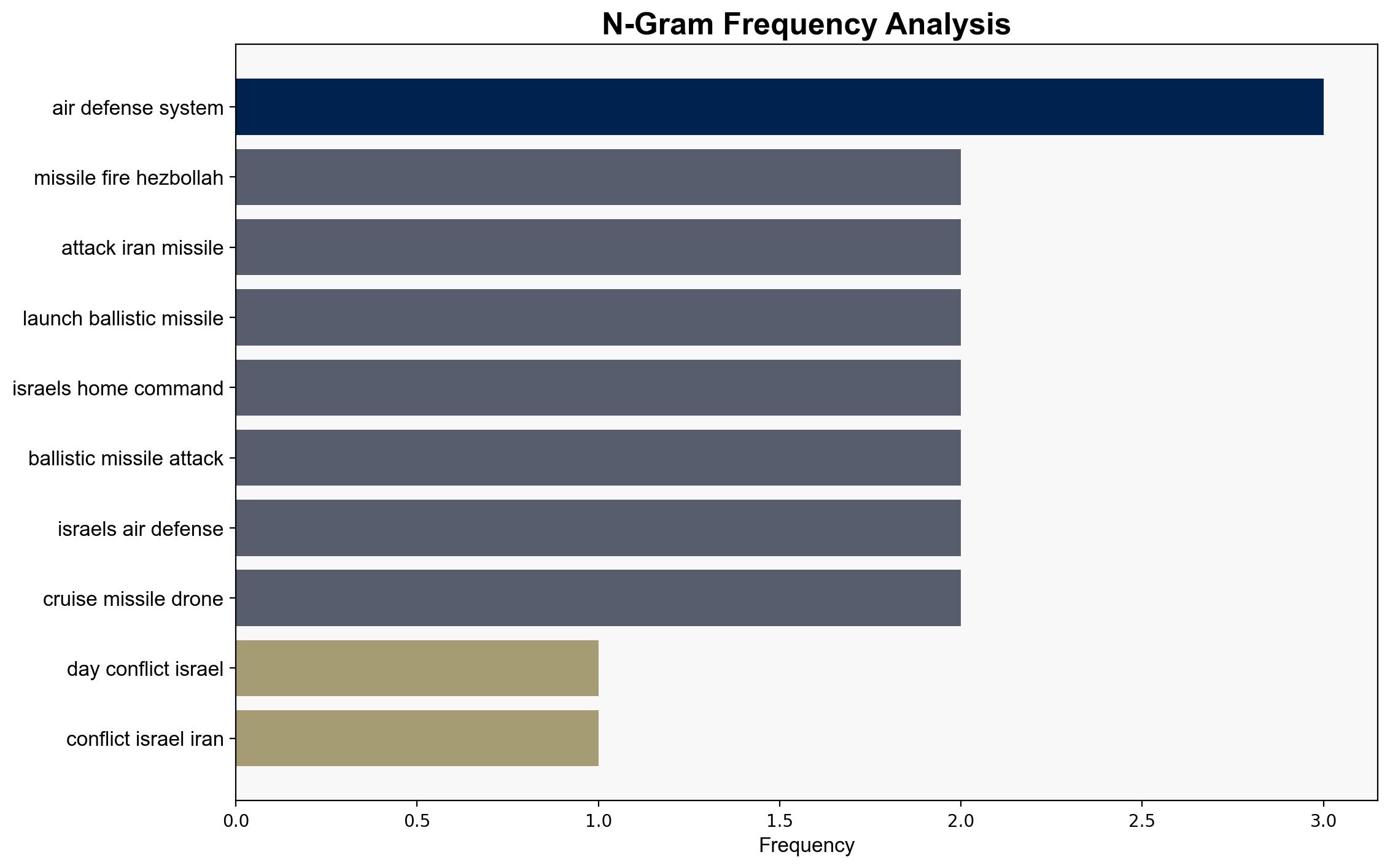Israels home front faces Iranian missile drone attacks – Longwarjournal.org
Published on: 2025-06-14
Intelligence Report: Israel’s Home Front Faces Iranian Missile Drone Attacks – Longwarjournal.org
1. BLUF (Bottom Line Up Front)
Israel is currently facing a significant threat from Iranian missile and drone attacks, which have penetrated its air defense systems. The attacks have resulted in casualties and infrastructure damage, particularly in civilian areas near Tel Aviv. Israel’s multi-layered air defense system has intercepted many threats, but the persistent nature of these attacks indicates a strategic escalation by Iran. Immediate recommendations include enhancing defense capabilities and public safety measures, as well as diplomatic engagement to de-escalate tensions.
2. Detailed Analysis
The following structured analytic techniques have been applied to ensure methodological consistency:
ACH 2.0
Iran’s likely intentions include destabilizing Israel’s internal security and testing the resilience of its defense systems. The timing and scale of the attacks suggest a coordinated effort to exploit perceived vulnerabilities.
Indicators Development
Monitoring of digital communications and propaganda reveals increased rhetoric advocating for attacks on Israeli targets, suggesting a potential for further escalation.
Narrative Pattern Analysis
Iranian narratives have increasingly focused on portraying these attacks as defensive measures, potentially to justify further aggression and recruit support.
3. Implications and Strategic Risks
The ongoing attacks pose significant risks to Israel’s national security and civilian safety. There is a potential for regional destabilization, with increased military engagement from Hezbollah and other Iranian-backed groups. The economic impact could be substantial, affecting tourism and foreign investment. Cybersecurity threats may also rise as part of a broader hybrid warfare strategy.
4. Recommendations and Outlook
- Enhance air defense systems with advanced technology to improve interception rates.
- Strengthen public safety protocols and communication systems to ensure rapid response to threats.
- Engage in diplomatic efforts to reduce tensions and prevent further escalation.
- Scenario Projections:
- Best Case: Diplomatic resolutions lead to a ceasefire and reduced hostilities.
- Worst Case: Escalation into a broader regional conflict involving multiple state and non-state actors.
- Most Likely: Continued sporadic attacks with intermittent diplomatic negotiations.
5. Key Individuals and Entities
Specific individuals involved in the strategic planning or execution of these attacks remain unidentified in the report. Monitoring of key figures in Iranian military and political circles is recommended.
6. Thematic Tags
national security threats, cybersecurity, counter-terrorism, regional focus





